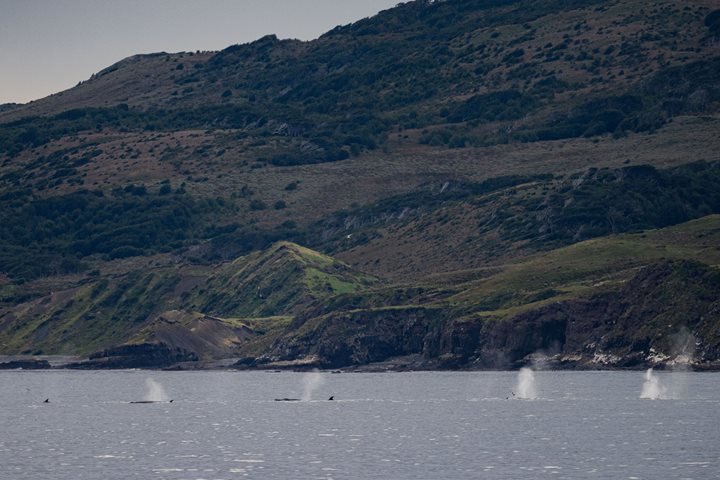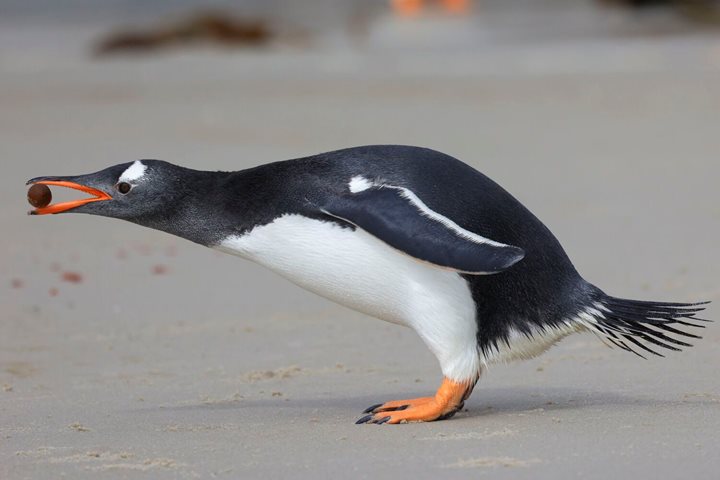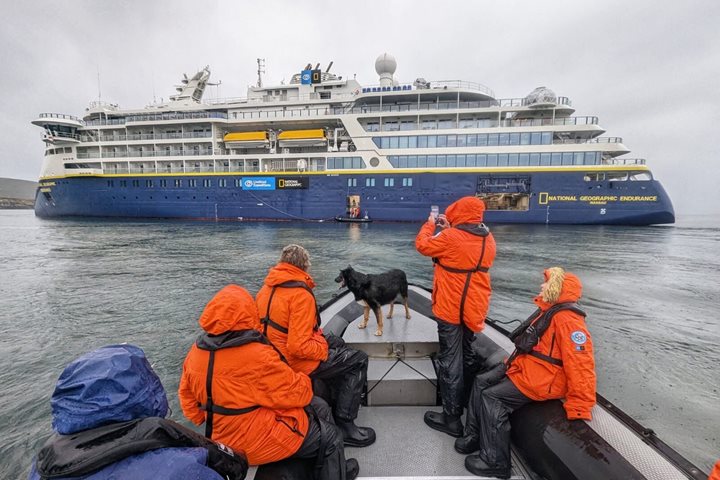Our crossing through this stretch of the Southern Ocean was uncharacteristically calm overnight. Most people would say pleasantly so. There was, however, no shortage of excitement first thing this morning, when a group of long-finned pilot whales showed up near the ship. The captain and his bridge team slowed the ship down, and we were able to get a good look at these magnificent creatures rushing through the waves. After a time watching these animals, a distant whale blow signaled the presence of a sperm whale. These creatures can be quite elusive, as they are amongst the deepest diving of whales. By the time we could have approached this animal, it had slipped below the waves where it would likely remain for the next hour. Here it would feed at the bottom of this very deep area of the ocean on fish and squid. It is truly a wonder how the whalers of old once depended on hunting these beasts for income, when they are so difficult to see, let alone hunt.
The seas remained quiet for much of the rest of the day. This meant that our lecture schedule for the day went largely uninterrupted, for a change. Our naturalist, Rodolfo Werner, gave us the second part of his talk on krill exploitation. This outlined the difficulties in managing the fishery of what is undoubtedly Antarctica’s keystone species, and presented issues central to understanding the plight potentially facing all of the wildlife which we encountered on this trip. Other talks today were on the lives of the Sami and whaling by National Geographic photographer Erika Larson and myself, respectively. This time of contemplation formed an appropriate bridge between the cold wilderness of South Georgia and the rugged warmth of the Falkland Islands.



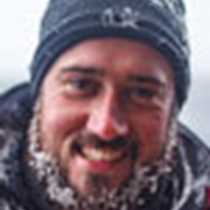
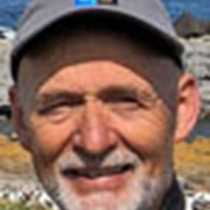

.jpg?width=106&height=85&mode=crop&scale=both&quality=50)
